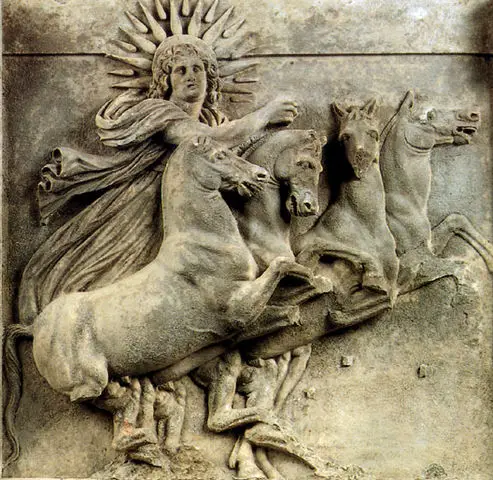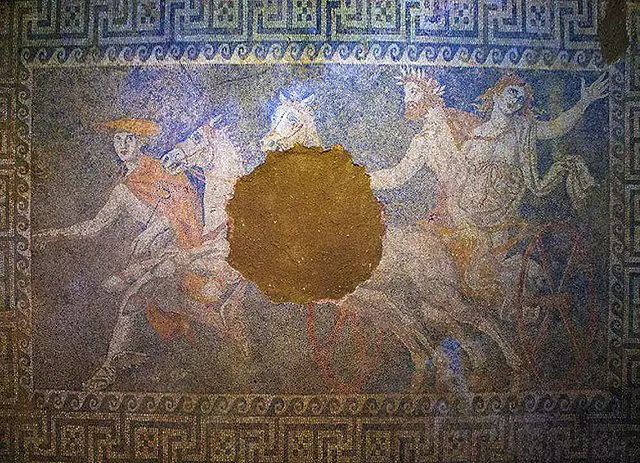| Further Reading | Top 5 Most Interesting Facts About Medieval Society |
Contrary to popular belief medieval peasantry had the capability to travel. Often this travel would only entail the surrounding countryside however on special occasions a peasant would embark on voyages across Europe. This article goes over how often a medieval peasant could travel around Europe.
During the medieval era peasants could travel across Europe by going on a pilgrimage. With the help from the local church a peasant could obtain permission from their lord to travel to places as far as Rome, Jerusalem, and Santiago de Compostela. If you lived during the medieval era you would have encountered traveling peasants all the time.
It is important to understand that in medieval europe there were two ‘classes’ of peasantry. First was a free peasant who worked for wage labor to supplement their income from their land. The second class was a serf which was legally tied to the land and had. Both classes of peasants in medieval Europe were capable of traveling to the edge of the known world on pilgrimage.
Here at The History Ace I strive to publish the best history articles on the internet. If at the end you enjoyed this article then consider subscribing to the free newsletter and sharing around the web.
Without further ado, here is an article answering the question of how often medieval peasants could travel around Europe.
How Often Medieval Peasantry Traveled Around Europe During The Early Medieval Era: 500-900 AD
From 500-900 AD the average medieval peasants could have traveled if they wanted to. There was little in the way of socital expectations or legal framework holding them back.
As historians we have very little sources which detail this time period outside some ancient texts from the reign of Charlemagne. We know that the outer regions of Charlemagne’s kingdom were hardly subjugated.
Here the peasantry was free to essentially act however they wanted to. It would not be uncommon to see medieval peasants traveling the roads in and around their local village.
We know from Jewish records that Charlemagne allowed the Jewish people to create a trading economy around his empire. Within this trading economy the peasantry of Jewish were considered royal clients and were completely independent from the local nobles. They could travel anywhere within the empire without needing to obtain permission.
Not many sources survive from this time period of Europe. However, it appears that the peasantry was free to travel so long as they could meet the tax quota imposed by Charlemagne or were not summoned to fight for the realm through a medieval military levy.
Serfs directly under control from a lord would have to obtain permission to travel. We do not have sources detailing how easy this was to obtain and there were very few pilgrimage sites during the early medieval era.
As such during the early medieval era of 500-900 AD chances are there were peasantry traveling around Europe but in significantly smaller amounts. This was not because of a lack of traveling but rather that there was not much the peasantry would want to see outside of their direct village.
How Often Medieval Peasantry Traveled Around Europe During The Middle Part Of The Medieval Era: 900-1200 AD
Sometime between 800-900 AD the Catholic church of Europe started to gain significant power. With this increase in power came a desire to obtain wealth and prestige.
One of the easiest ways to do this was to have the peasantry of Europe begin to travel to pilgrimage sites. These pilgrimages sites and the traveling villages along the way would begin to develop an entire economy that catered to these traveling peasants.
These traveling peasants would begin to create a system of pilgrimage roads around Europe. Often these roads would take the old Roman roads but sometimes new routes would be created.
From about 900-1120 AD Euopre would begin to experience an explosion in medieval peasants traveling around Europe. Both serfs and free peasantry would be able to obtain a pilgrim badge demonstrating that they were traveling across Europe with consent of the Church.
From old reports coming out of England we know that it was relatively easy for serfs to obtain permission from a lord to travel. This was because often the local church would work to help sway the lord’s decision.
The peasant or serf would then be given a badge. This badge would be both a traveling ‘license’ and also a passport to help guide the pilgrims on their way to the end destination.
The famous first Crusade can be seen as a climax in this new age of peasants traveling around Europe. Using the pilgramige roads and traveling system hundreds of thousands of armed pilgrims would travel to the levant to capture the city of Jerusalem.
As such during the middle part of the medieval era both peasants and serfs were able to travel across Europe quite easily. Now there was an entire infrastructure system in place to accommodate travelers unlike before during the early medieval era.
How Often Medieval Peasantry Traveled During The High Medieval Period: 1200-1500
After the period of the crusades the average medieval peasantry was more than capable of traveling around Europe. During the high/late medieval era of 1200-1500 a massive tourism economy would spring up to cater to traveling peasantry around Europe.
This is the peak of the middle/medieval era for traveling peasants. Not only were their roads and waypoint villages/inns but the routes were relatively safe and easy to travel.
If you lived during this time period you would see thousands of peasants traveling around Europe. Historians have several primary source documents which detail how widespread this traveling was.
A prime example of a primary source document detailing peasants traveling around Europe would be Geoffry Chaucher’s Canterbury Tales. This 15th century book provides a detailed explanation of the type of person you would encounter while on pilgrimage from London to the cathedral of Canterbury.
Further, historians also notice a significant rise in pilgrim badges during this time. A pilgrim badge would be worn on the traveling peasant to signal to other peasants and lords that they were on a pilgrimage and should not be stopped.
From the 12th century up to the end of the medieval era in the 15th/16th century the amount of pilgrimage badges made exploded. To this day you can find badges scattered around Europe.
As such during the late medieval era the peasantry was easily able to travel around Europe. Most people would be able to undertake several small travels during their lifetime with one large one to either Rome or Jerusalem.
Conclusion
There you have it; an entire article dedicated to answering the question of how often medieval peasants traveled around Europe.
As usual it all comes down to the answer “it depends.” The medieval era is segmented into three categories and every single lord/noble had the final say in giving permission to travel. However, what is known is that towards the end of the medieval era the peasantry was easily able to travel.
Here at The History Ace I strive to publish the best history articles on the internet. If you enjoyed this article then consider subscribing to the free newsletter and sharing around the web.
Further, you can check out some of the other articles below.
-
How The American Revolution Changed The World

Here is how the American Revolution changed the world. Many people are not aware of just how important this event actually was.
-
Why The Roman People Loved Chariot Racing

Why did the Roman people love chariot racing? Well it all comes down to these 3 reasons.
-
The Design and Color of Roman Chariots

What was the design and color of Roman Chariots? Were they faster or slower then normal chariots? Well here is everything!
Sincerely,
Nick